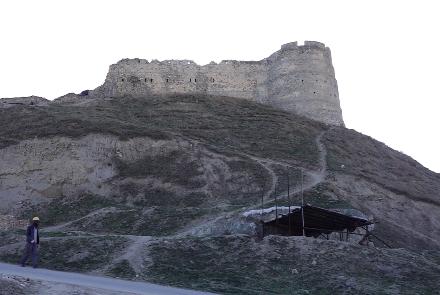Archeologists during recent excavations found new relics from Bala Hissar—an ancient citadel located in the south of the old city of Kabul. The estimated date of its construction is around the 5th century AD.
Bala Hissar sits to the south of the modern city center, at the tail end of the Kuh-e-Sherdarwaza Mountain.
The discoveries began with the cooperation of a team of French archeologists three months ago.
According to the archeologists, the relics found at the site derive from ancient Greek culture and tradition.
In the past, archeologists also discovered relics which date back to the Kushan dynasty and Islamic period.
The Kabul Bala Hissar is lying over 230 acres of land and has 22 towers.
“Every period has its own uniqueness, techniques, material and construction style,” said Zabihullah Mohammadi, an archologist.
The archologists have said that their work at the site will continue for the next four years.
India has provided financial assistance for the renovation of the citadel. The Afghan government with the Aga Khan Foundation are implementing the project.
After the reconstruction, the citadel is to be turned into a national park for the use of archaeologists.
“Two years ago, a financial agreement was signed between the Government of India and the Government of Afghanistan to strengthen the historic walls of the citadel,” said Amanullah Sahibzada, the head of the media department of the Aga Khan Cultural Trust.
The citadel has been used for military purposes in the past.
“We achieve everything we do—this is a military site—it is dangerous, there might be unexploded ordnance. We are working on the site, after the clearance, we will continue our work,” said Abdullah Azizi, a demining officer in the site.
The French Archaeological Board in Afghanistan will continue the excavations in Bala Hissar after getting permission from the Ministry of National Defense.


Comment this post